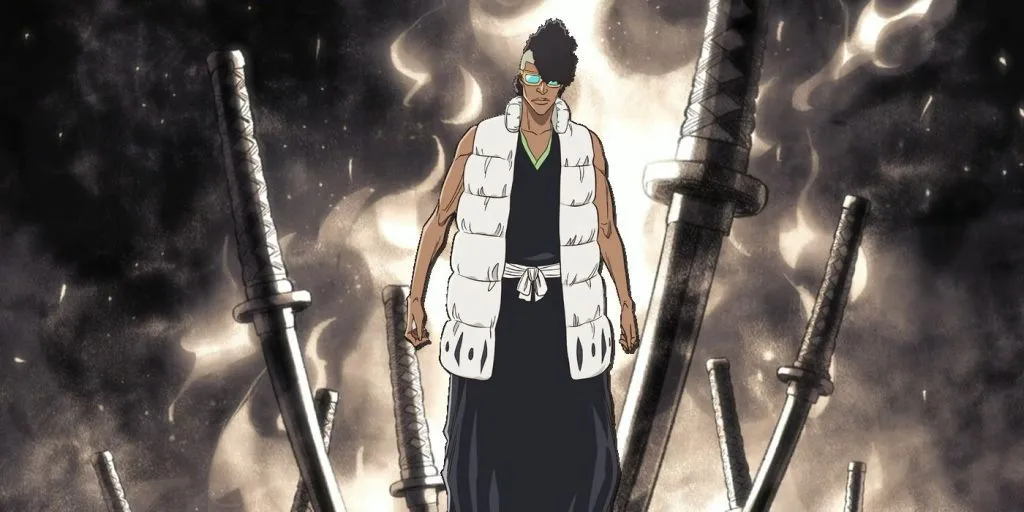
Zanpakutō are one of the most distinctive and important aspects of the “Bleach” anime and manga series. These unique weapons, which are wielded by the Shinigami, are not only powerful tools of battle, but also deeply connected to the personalities and traits of their owners.
In this article, we will explore the significance of the bond between Shinigami and Zanpakutō in the “Bleach” universe, and how it has shaped the story and characters of this iconic anime.
|What are Zanpakutō?
Zanpakutō are sentient swords that are wielded by the Shinigami in the “Bleach” anime. Each Zanpakutō has a unique spirit, which is connected to the personality and traits of its owner. There are two types of Zanpakutō: the regular type, which can be released to reveal a special ability, and the Bankai, which is the ultimate form of a Zanpakutō.
|The Relationship Between Shinigami and Zanpakutō
The bond between a Shinigami and their Zanpakutō is a crucial aspect of the “Bleach” anime. The spirit of the Zanpakutō resides within its owner, and can communicate with them to offer guidance and support. The appearance and abilities of a Zanpakutō are also influenced by its owner’s personality and traits.
For example, Ichigo Kurosaki’s Zanpakutō, Zangetsu, has a dark and brooding appearance, reflecting Ichigo’s serious and introspective nature. By contrast, Rukia Kuchiki’s Zanpakutō, Sode no Shirayuki, is elegant and graceful, reflecting Rukia’s refined and reserved personality.
|The Evolution of Zanpakutō
Zanpakutō can also evolve and change over time, reflecting the growth and development of their owners. The ultimate form of a Zanpakutō is the Bankai, which represents the pinnacle of a Shinigami’s power and ability.
For example, Ichigo’s Bankai, Tensa Zangetsu, is a powerful and fearsome weapon that reflects Ichigo’s growth and determination to protect his loved ones. Similarly, Byakuya Kuchiki’s Bankai, Senbonzakura Kageyoshi, is a complex and intricate weapon that reflects Byakuya’s sophistication and attention to detail.
|Historical background of Zanpakutō
Zanpakutō are deeply rooted in Japanese mythology, where they were believed to be the swords of powerful spirits or gods. The concept of a sword having a spirit or consciousness is known as tsukumogami, and is found in many different forms of Japanese folklore. In the context of “Bleach,” Zanpakutō are adapted to the Shinigami, who use them to guide lost souls to the afterlife.
The idea of Zanpakutō as a manifestation of the wielder’s spirit and personality is also influenced by the concept of “katana kagami,” or “the sword as a mirror.” This refers to the idea that a person’s sword reflects their innermost thoughts and desires, and that a warrior’s swordsmanship is a reflection of their character. In “Bleach,” the bond between a Shinigami and their Zanpakutō is similarly based on trust and understanding, with the Shinigami needing to fully understand and accept their weapon in order to unleash its true power.
In terms of the specific names and abilities of Zanpakutō in “Bleach,” many of them are derived from Japanese mythology or folklore. For example, the Zanpakutō of the character Sajin Komamura is called “Tenken,” which means “heavenly punishment,” reflecting his stern and unyielding personality. By drawing on these cultural references, “Bleach” adds depth and complexity to the world of Zanpakutō and helps to make the concept feel more grounded in Japanese history and culture.
|Analysis of Zanpakutō Abilities
In “Bleach,” the different types of Zanpakutō abilities are a key element of the series’ action and storytelling. From energy blasts to illusions, each Zanpakutō has its own unique abilities that can be used in creative and strategic ways in battle.
One example of a Zanpakutō ability is “Shikai,” which is the first release state of a Zanpakutō. In this state, the sword gains a new form and ability, such as the ability to create a massive energy blast or to manipulate the environment. This ability is used by many of the series’ characters, and is often the key to victory in battle.
Another example is the “Bankai,” which is the ultimate release state of a Zanpakutō. In this state, the Zanpakutō undergoes a dramatic transformation and gains immense power, but at the cost of putting a great strain on the Shinigami’s body. Bankai abilities can range from summoning powerful spirits to manipulating time and space, and are often the trump card that a Shinigami will use in a life-or-death battle.
Throughout the series, characters have used their Zanpakutō abilities in creative and strategic ways to gain the upper hand in battle. For example, the character Rukia Kuchiki uses her Zanpakutō, “Sode no Shirayuki,” to create a massive ice storm that can freeze her opponents in place. Another character, Kenpachi Zaraki, uses his immense physical strength to enhance the abilities of his Zanpakutō, “Nozarashi,” which can cut through anything with ease.
However, the limitations of Zanpakutō abilities are also a recurring theme in the series. For example, some Zanpakutō are heavily reliant on the user’s physical stamina and can only be used for short bursts of time, while others have very specific conditions that must be met in order to unleash their full power. This creates a sense of tension and uncertainty in battle, as characters must constantly adapt and overcome the limitations of their weapons.
Overall, the different types of Zanpakutō abilities are a crucial element of the “Bleach” universe, and provide a rich and diverse landscape for action and storytelling. Whether it’s the raw power of a Bankai or the strategic cunning of a Shikai, the abilities of Zanpakutō have kept fans of the series on the edge of their seats for years.
|The Symbolism of Zanpakutō Names
In “Bleach,” each Zanpakutō has a unique name that reflects its nature and abilities. These names are often derived from Japanese mythology or folklore, and provide a deeper understanding of the personality and motivations of the Shinigami who wield them.
One example is the Zanpakutō of the main character Ichigo Kurosaki, “Zangetsu,” which means “moon-cutter.” This name reflects Ichigo’s fierce determination to protect his loved ones, as well as his loyalty and dedication to his friends. The crescent moon shape of Zangetsu’s blade also adds to the symbolism, as it represents a sense of incompleteness or imperfection that Ichigo must overcome in order to achieve his goals.
Another example is the Zanpakutō of the character Byakuya Kuchiki, “Senbonzakura,” which means “thousand cherry blossoms.” This name reflects Byakuya’s refined and elegant nature, as well as his mastery of the blade. The petals of the cherry blossoms also symbolize the delicate and precise movements of Byakuya’s swordsmanship, and add to the beauty of his attacks in battle.
The symbolism of Zanpakutō names is also evident in the abilities and powers of the weapons themselves. For example, the Zanpakutō of the character Tōshirō Hitsugaya, “Hyōrinmaru,” means “ice ring,” which reflects the ice-based powers of the weapon. The name also represents the elegant and powerful nature of Tōshirō’s attacks, as well as his cool and collected demeanor in battle.
Overall, the names of Zanpakutō in “Bleach” provide a deeper understanding of the characters who wield them, and add to the rich symbolism and mythology of the series. From the fierce determination of Ichigo’s Zangetsu to the elegant precision of Byakuya’s Senbonzakura, the names of Zanpakutō reflect the unique personalities and motivations of the Shinigami who wield them.




No Comments